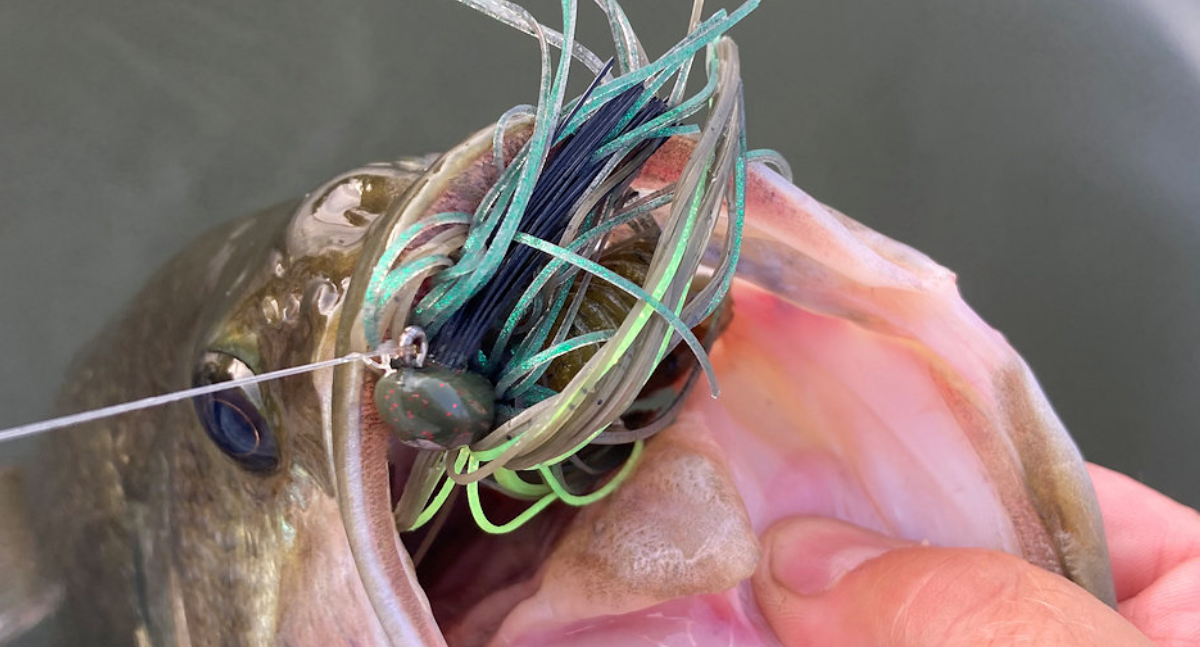Mar 23rd 2024
Unlocking Success: Your Guide to Jig Selection for Spawning Bass in the Southern States.
As spring casts itself across the southern states, it marks a pivotal time for anglers seeking the thrill of bass fishing during the spawn. With the warming waters, bass transition into their spawning grounds, presenting a prime opportunity for anglers to capitalize on their seasonal behavior. Among the many lures at an angler's disposal, jigs have become an indispensable tool for us this time of year when it comes to enticing spawning bass.
Below, we'll cover our favorite types of jigs that we fish for spawning bass, along with some tips and techniques for maximizing your day on the water.
Football Jigs
A staple in most bass angler's arsenal, the football jig excels in rocky terrain commonly found in southern lakes and rivers. Designed with a football-shaped head and a stout hook, this jig mimics crayfish, a favored delicacy for bass during the spawning season.
To fish a football jig effectively:
- Cast it near rocky structures such as boulders, ledges, or submerged points.
- Allow the jig to sink to the bottom, then employ a slow, methodical retrieve, bouncing it along the rocky substrate.
- Pay close attention to any subtle taps or changes in weight, as this often signals a bass has swallowed the jig.
A great rod for this is a 7'-7’3” Heavy Casting Rod.
Flipping Jigs
When bass retreat to heavy cover during the spawning season, flipping jigs become indispensable for enticing these elusive giants. Flipping jigs have a compact profile and typically a weed guard. They excel in penetrating dense vegetation and structures where bass seek refuge.
To fish a flipping jig effectively:
- With stealth and precision, approach potential hiding spots such as lily pads, submerged brush, or docks.
- Pitch the jig into the heart of the cover, allowing it to free-fall through the tangled maze below.
- Once it reaches the desired depth, employ short, sharp lifts of the rod tip followed by controlled descents, enticing bass lurking within the shadows.
A good flipping jig rod will be around a 7'3”-7’6” Heavy-Extra Heavy Casting rod, Depending on the weight of the jig.
Swim Jigs
As bass actively patrol spawning flats and shallows swim jigs present a dynamic option for enticing these roaming predators. Characterized by a streamlined head and a tantalizing skirt, swim jigs emulate baitfish or fleeing prey, triggering aggressive strikes from territorial bass.
To fish a swim jig effectively:
- Target areas with submerged vegetation, laydowns, or shallow flats where bass congregate.
- Cast the jig beyond the target zone, then retrieve it with a steady motion, making subtle twitches and pauses to mimic the erratic movement of prey.
- Be prepared for explosive strikes as bass ambush the jig with voracious intent.
A good rod for swim jigs would be a 7’3” Medium Heavy Casting rod.
Finesse Jigs
When bass exhibit finicky behavior or face heightened fishing pressure, finesse jigs emerge as a subtle yet potent option for triggering strikes. Designed with a compact profile and finesse skirt, finesse jigs excel in clear water conditions and when targeting wary bass.
To fish a finesse jig effectively:
- Downsize your tackle and opt for lighter line to maintain a natural presentation.
- Target isolated covers such as submerged logs, rock crevices, or drop-offs where bass seek refuge.
- Use a slow, meticulous retrieve, dragging the jig along the bottom with gentle twitches to entice hesitant bass into striking.
A good rod for finesse Jigs would be 7’0” Medium Heavy Casting rod.
As you take off on your next fishing trip to chase spawning bass down south, remember that versatility and adaptability are key traits of successful anglers.
Experiment with different types of jigs, change up your presentations when necessary, and with a little patience, perseverance, and finesse, you'll be on the fish in no time.

